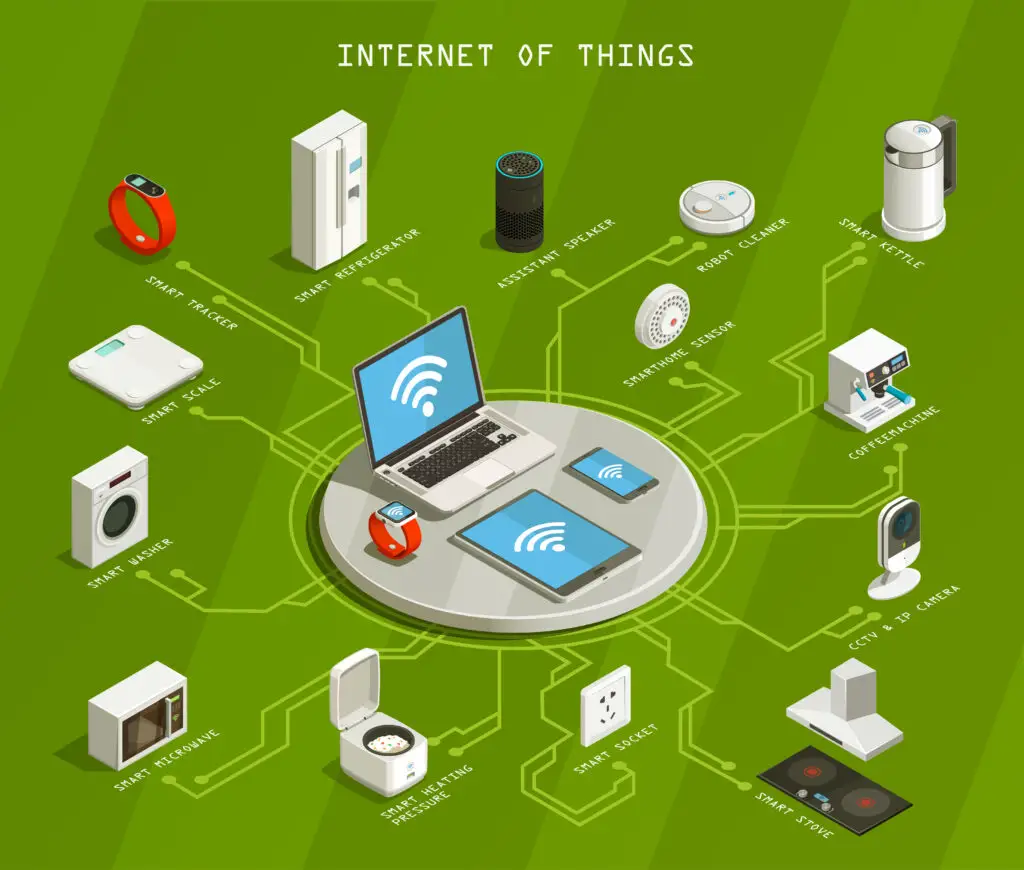In a bustling smart home filled with lights, locks, cameras, and thermostats, managing each device through its own app can feel like herding cats. Enter IoT hubs: the central nervous systems that bring harmony to this chaos, unifying your devices for effortless control. In 2025, with over 18.8 billion IoT devices worldwide (projected to hit 30 billion by 2025 per IoT Analytics), hubs like the Amazon Echo Hub, Google Nest Hub Max, Apple HomePod Mini with HomeKit Hub, and Home Assistant Yellow are transforming how we interact with our connected ecosystems. The global smart home hub market is expected to grow at a 22% CAGR, reaching $5.6 billion by 2027, driven by interoperability standards like Matter and the rise of DIY smart homes. This case study explores real user stories, delves into the technical backbone, and offers a framework to decide if an IoT hub is right for you, making device management a breeze.
Case Study: Real User Stories with IoT Hubs
Story 1: Sarah’s Smart Apartment Upgrade
- Profile: 32-year-old renter, tech enthusiast, managing Philips Hue lights, Eufy Video Smart Lock, and Nest Thermostat.
- Challenge: Juggling three apps frustrated Sarah, with delays in syncing lights and locks during movie nights.
- Solution: She adopted the Amazon Echo Hub ($179), integrating all devices via Matter. “Hey Alexa, set movie mode” now dims lights, locks the door, and adjusts the thermostat in one command.
- Outcome: Setup took 40 minutes, and she saved 10% on energy with automated routines. “It’s like having a personal assistant,” Sarah says, noting fewer app switches.
Story 2: Mark’s DIY Smart Home
- Profile: 28-year-old homeowner, DIY hobbyist, using Govee Glide Hexa Pro, Yale Smart Lock, and Arlo cameras.
- Challenge: Mark’s diverse devices relied on separate hubs, causing compatibility issues and slow responses.
- Solution: He built a Home Assistant Yellow hub ($99), leveraging its open-source platform and local processing. Custom commands like “OK Nabu, secure the house” lock doors and arm cameras.
- Outcome: Setup spanned two days due to configuration, but Mark enjoys privacy and 15% faster response times. “Total control without cloud reliance,” he reports.
Story 3: Emily’s Multi-Platform Household
- Profile: 35-year-old parent, managing Apple HomeKit devices, Google Nest cameras, and Amazon Echo speakers.
- Challenge: Emily struggled with ecosystem fragmentation, with Siri, Google, and Alexa commands conflicting.
- Solution: She invested in the Google Nest Hub Max ($229), supporting Matter for cross-platform unity. “Hey Google, good night” now coordinates all devices.
- Outcome: Setup took 30 minutes, and Emily appreciates the 10-inch display for camera feeds. Energy savings hit 12% with smart routines.
These stories highlight how IoT hubs solve device sprawl, but the technical underpinnings and your specific needs determine the best fit.

Technical Deep Dive: How IoT Hubs Unify Smart Devices
IoT hubs act as the brain of a smart home, translating and routing commands across devices using various protocols. Here’s the tech behind the magic, based on insights from available sources:
- Protocols and Connectivity: Hubs support multiple standards—Zigbee, Z-Wave, Wi-Fi, Thread, and Bluetooth—ensuring compatibility with diverse devices. Matter, a 2025 interoperability standard, unifies these protocols, allowing a Hue bulb to work with Alexa or Google Assistant, per csa-iot.org. Thread’s mesh networking enhances range and reliability, per tomsguide.com.
- Local vs. Cloud Processing: Hubs like Home Assistant process data locally, reducing latency (under 1 second) and privacy risks, per home-assistant.io. Cloud-based hubs (e.g., Echo Hub) offer remote access but may introduce 2–5-second delays, per pcmag.com.
- Hardware Components: A typical hub includes a microcontroller (e.g., ESP32 in Home Assistant Yellow), wireless radios (Zigbee/Thread), and a power supply. The Nest Hub Max adds a 10-inch display and camera, per wired.com.
- Software Ecosystem: Hubs run firmware supporting apps like Alexa, Google Home, or Home Assistant, with APIs for custom integrations. Matter’s adoption in 2025 simplifies development, per theverge.com.
- Scalability: Hubs handle 50–200 devices, depending on model. Echo Hub supports 100+ with Matter, while Home Assistant scales infinitely with add-ons, per iotforall.com.
Posts on X reflect excitement, with @csaiot noting TP-Link’s Tapo HomeBase H500 as a Matter controller, unifying Tapo and non-Tapo devices, per @csaiot. This technical foundation ensures hubs like Echo Hub or Nest Hub Max can unify your smart home, but your choice hinges on specific needs.
Decision-Making Framework: Is an IoT Hub Right for You?
Choosing an IoT hub requires balancing your smart home goals, budget, and technical comfort. Here’s a framework to guide you:
Step 1: Assess Your Device Ecosystem
- Diverse Brands?: If you use Philips Hue, Eufy, and Nest (like Sarah), a Matter-compatible hub (Echo Hub, Nest Hub Max) unifies them, per theverge.com.
- Single Ecosystem?: Apple HomeKit users may prefer HomePod Mini, while Alexa fans can stick with Echo, per bestbuy.com.
- DIY Preference?: Home Assistant suits tech-savvy users like Mark, offering custom control, per home-assistant.io.
Step 2: Evaluate Connectivity Needs
- Wi-Fi Only?: LIFX or Echo Hub works without extra hubs, but weak signals may lag, per techhive.com.
- Multi-Protocol?: Zigbee/Z-Wave devices (e.g., Yale locks) need a hub like Nest Hub Max or Home Assistant, per tomsguide.com.
- Future-Proofing?: Matter and Thread support (all listed hubs) ensure compatibility with 2025 devices, per csa-iot.org.
Step 3: Consider Privacy and Cost
- Privacy Focus: Home Assistant’s local processing avoids cloud risks, ideal for privacy advocates, per home-assistant.io.
- Budget: Echo Hub ($179) or Home Assistant Yellow ($99) beats Nest Hub Max ($229) or HomePod Mini ($99 + HomeKit costs), per wired.com.
- Subscription?: Alexa+ ($19.99/month) or HomeKit Secure Video ($2.99/month) add features but aren’t required, per emarketer.com.
Step 4: Test and Scale
- Trial Run: Start with one hub (e.g., Echo Hub) and add devices gradually, per pcmag.com.
- Expansion: Ensure your hub supports future devices (e.g., 100+ for Echo), per iotforall.com.
- Support: Check app tutorials or community forums (e.g., Home Assistant’s) for troubleshooting, per home-assistant.io.
Recommendation: For a balanced start, the Amazon Echo Hub suits most homes with its Matter support and affordability. Tech enthusiasts like Mark may prefer Home Assistant for customization.
Benefits and Challenges: The IoT Hub Experience
Benefits
- Unified Control: One app replaces multiple, simplifying routines like “Alexa, good night” (lights off, doors locked), per ahs.com.
- Interoperability: Matter ensures devices from Hue, Eufy, and Nest work together, per theverge.com.
- Automation: Save 10–15% on energy with schedules, per philips-hue.com.
- Scalability: Add 50–200 devices, from lights to sensors, per tomsguide.com.
- Accessibility: Hands-free control aids all users, per outsourceaccelerator.com.
Challenges
- Setup Complexity: Hub setup (20–40 minutes) and device pairing can frustrate beginners, per pcmag.com.
- Connectivity Issues: Wi-Fi or Zigbee drops may occur; Thread improves this, per csa-iot.org.
- Privacy Risks: Cloud hubs (Echo, Nest) store data; local options (Home Assistant) mitigate this, per home-assistant.io.
- Cost: $99–$229 upfront, with optional subscriptions, per wired.com.
- Compatibility: Older devices may need bridges, per techhive.com.
GadgetShaker’s insight: Hubs shine with multiple devices but require planning for seamless integration.
The Future of IoT Hubs
By 2030, IoT hubs will evolve:
- AI-Driven Automation: Predict routines (e.g., pre-warming your home), per oyelabs.com.
- 6G Connectivity: Ultra-low latency for instant control, per our 5G article.
- Matter Expansion: Full cross-platform unity, per theverge.com.
- Energy Harvesting: Self-powered hubs, per our sustainable laptops article.
For you, this means hubs that anticipate needs, connect effortlessly, and align with green living.
GadgetShaker’s Case Conclusion: Your Smart Home Hub
From Sarah’s movie night magic to Mark’s DIY mastery and Emily’s multi-platform harmony, IoT hubs prove their worth. The Amazon Echo Hub offers a balanced start, while Home Assistant Yellow caters to tinkerers. Questions about setup or compatibility? Reach out on our Contact Us page or comment below! Stay tuned for “IoT Hub Setup Guide for 2025” or “Top Smart Devices to Pair with Your Hub.”
Final Verdict: Effortless Control, Unified Living
IoT hubs in 2025, like the Amazon Echo Hub, Google Nest Hub Max, Apple HomePod Mini, and Home Assistant Yellow, unify smart devices for effortless control. With Matter support, local processing options, and scalable designs, they streamline smart homes. Despite setup challenges and privacy concerns, their impact is transformative. Join GadgetShaker—subscribe to our newsletter.

